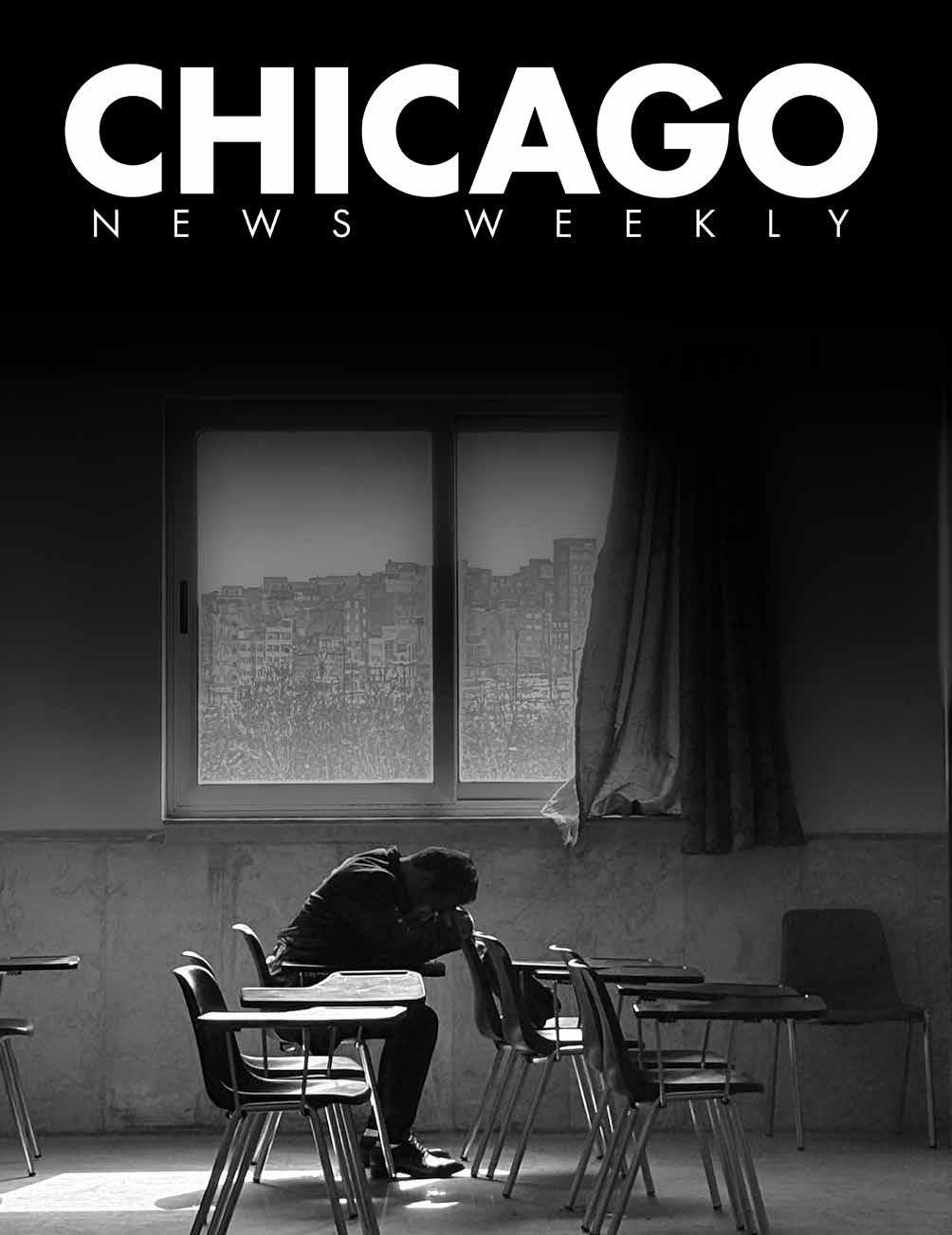

Left to Learn Alone
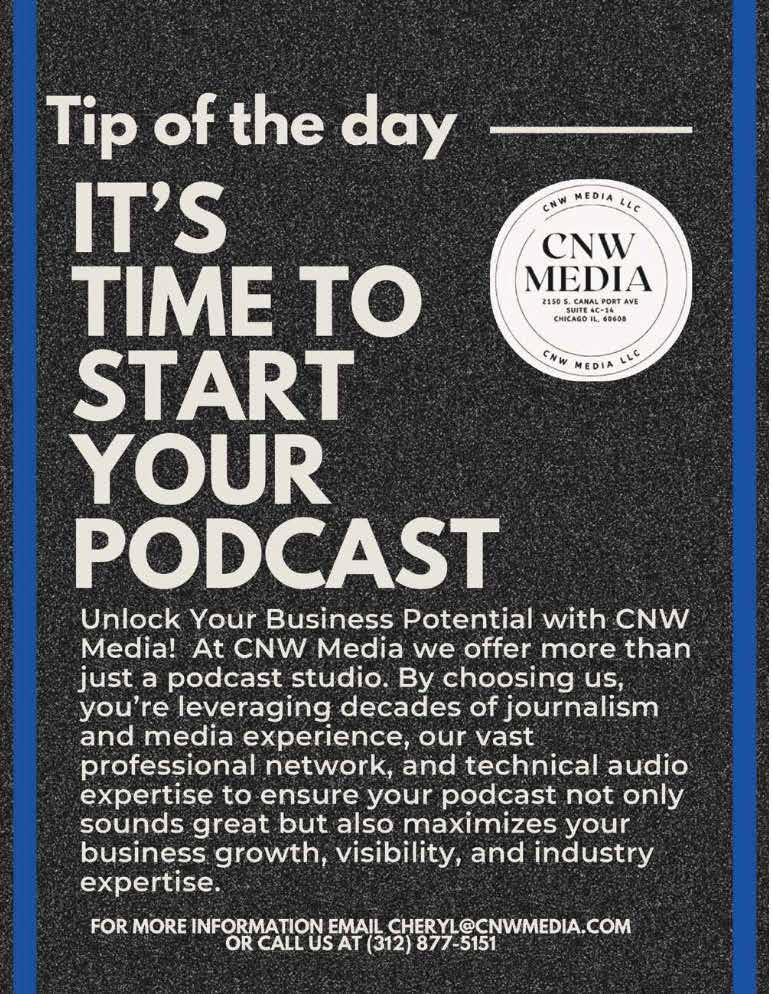

Cheryl Mainor Norman CEO & Publisher
Kai EL’ Zabar
Editor-In-Chief
Laura Miller Managing Editor
Paul Mainor Art Director
Max Blaisdell Copy Editor
Staff Writers
CL Blackburn
Zada Johnson
Dr. Mila K. Marshall
Wanda Wright
Malachi Webster
Columnists
Dr. Sanja Rickette Stinson
David Seaton
Contributors
NNPA Newswire
Mare Evans
Melanie Mainor
Ken Hare
Cover Photo Aryan Fo/Unsplash
Advertising Representation
Chicago Media Partners
Michael Tolliver (708)268-5518
Kenard Karter
Kevin Ross
Chicago News Weekly 2150 S. Canalport Ave. Suite 4-C14 Chicago, IL 60608 312. 877. 5151
Vol. 3 No 12 Thursday, July 10, 2025
Chicago News Weekly is published weekly on Thursday.
www.cnwmedia.com
advertising@cnwmedia.com editorial@cnwmedia.com
Subscription $104 year


E notes
Choosing Response Over Reaction
Remembering to pause and breathe deeply before we respond—if done appropriately to the stimulus—can shift the energy of the outcome.
It’s no secret that today’s socio-political climate is changing, and many of us find ourselves reacting rather than responding. Consequently, we have all found ourselves reacting to situations and circumstances that were not well suited or ideal—upon hearing bad news, being slighted, unfairly criticized, or told something about ourselves that we did not want to hear.
It’s normal human behavior to react. However, in this context, reaction is an immediate, often impulsive, and automatic action or emotional expression to a stimulus. It’s typically driven by instinct, emotion, or subconscious programming—without much conscious thought or consideration of potential consequences. Think of it like a knee-jerk reflex or a “fightor-flight” response. Reactions are often quick, spontaneous, and can be influenced by current emotional states, stress, or past experiences.
This makes sense because when our emotions are triggered, we often lose all rationale, inhibiting our ability to pause before we speak or act. Many a dispute has escalated to a physical altercation because people fail to think through the situation. It’s common to feel forced to release the tension by expressing ourselves in some way—whether it’s yelling back at the person yelling at us or even accosting the person who is doing the yelling
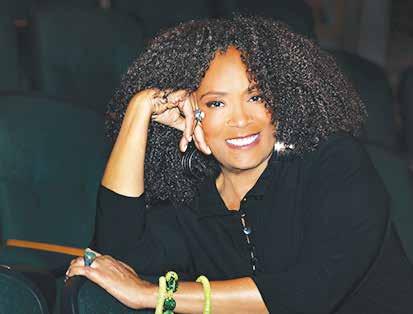
or disrespecting us.
The flip side may be a show of compassion, like rushing to deliver words of comfort to a friend in trouble. However, there is much to be said for self-management. Yes—how we manage ourselves can go a long way. It means teaching ourselves to remember to pause and breathe—breathe in deeply—before we respond to the shocks and insults that can come our way in life.
For one thing, our initial response is not always what’s best for us, or for the other people involved, simply because we have reacted rather than taken a moment to self-manage and respond. Reacting to childish rage with childish rage will only escalate the negativity in a situation, further ensnaring us in an undesirable dynamic. Similarly, when we react defensively or thoughtlessly, we often end up feeling regret over our words or actions. In the end, we save ourselves a lot of pain when we take a deep breath and really tune in to ourselves—and to the other person—before we respond. This doesn’t necessarily mean we say nothing, although in some cases, that may be the best option. So what we want to do is respond.
To respond: A response, on the other hand, is a thoughtful, deliberate, and often calculated action or reply to a stimulus, internal or external. It involves pausing, processing information, considering different perspectives, and
choosing the most appropriate course of action or words. Responses are rooted in reason, self-awareness, and emotional intelligence, taking into account the context, the feelings of others, and the long-term outcomes.
Some situations require a fairly immediate response, but even just a moment of grounding ourselves before we do so can help enormously. The next time you find yourself wanting to react, try to pause—and in that pause, take a deep breath. Feel your feet on the floor, the air on your skin, and listen for a response to arise within you,
your head. You may find that in that moment, there is the potential to move beyond reaction and into the more subtle and creative realm of response, where something new can happen.
Taking time to teach or train yourself to respond rather than react will save you a lot of stress. It will also help to balance your equilibrium— which is a state in which opposing forces or influences are balanced. And in our circumstances as human beings, being in control of one’s emotions can be a real game changer.
So respond rather than react when your emotions are

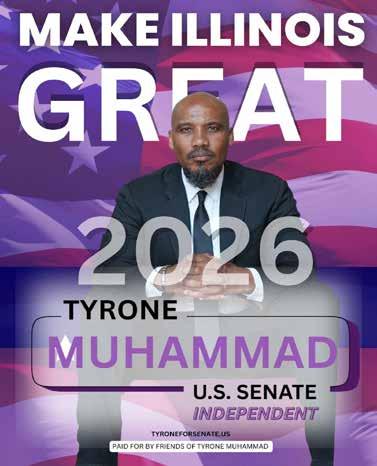

Kai EL’ Zabar Editor-in-Chief
photo credit: Dot Ward
commentary Dr. Sanja Rickette Stinson CNW Columnist
Entrepreneurship in the Unknown Zone
You don’t need to be a theologian or a CEO to know what it feels like to be in the “unknown zone.” The “unknown zone” is between vision and visibility, between calling and confirmation. Yet, the “unknown zone isn’t “Empty it is Pregnant with Purpose”. For entrepreneurs especially, those who are faith-driven this zone is where bold ideas meet shaky knees. It’s exciting. It’s terrifying. It’s holy ground.
To be real we like the romanticize journey of entrepreneurship. You that journey that many might believe it’s only built on confidence, business plans, and LinkedIn wins. But the truth is, some of the most transformative moments in a founder’s journey happen in obscurity— before the first client signs, before the product sells, and sometimes, even after the funding dries up.
So, let’s define the “unknown zone”. The “unknown zone” is that mental, emotional, and often financial space where you’ve said yes to something bigger—a new business, a new direction, or a necessary pivot—but you don’t yet know how it’s all going to work out. You’re walking in obedience, but without all the outcomes. You’re believing in the vision, even when validation hasn’t come. For the faith-driven entrepreneur, this zone isn’t foreign. In fact, it’s foundational.
Let’s consider Hebrew 11:8: “By faith Abraham obeyed when he was called to go out to a place… and he went out, not knowing where he was going.” This scripture is a picture of faithful entrepreneurship. Why! Abraham didn’t wait for GPS coordinates or a ten-point business
strategy. Abraham moved based on a promise, not a plan
That’s the picture of faithful entrepreneurship. Abraham didn’t wait for GPS coordinates or a 10-point business strategy. He moved based on a promise, not a plan.
As a recently retired nonprofit founding CEO I reflect back to the birthing years. When I stepped out to launch my nonprofit over three decades ago, I didn’t have generational wealth, political backing, or even a fully mapped business plan. What I did have was a divine nudge—and a burden to serve that experiencing homelessness in my community. That burden became a blueprint. That vision, over time, became a nationally recognized organization.
But I’d be lying if I told you I never doubted or delayed. There were seasons when the “how” was unclear and the resources were tight. But somehow, faith fueled forward motion.
This is where many entrepreneurs get it wrong: faith doesn’t eliminate fear, and you don’t need to fully grasp fear to disrupt it. Faith calls you to move anyway. It quietly says, ‘Go,’ even when fear shouts, ‘Stop.’ The real power isn’t in being fearless—it’s in the decision to rise, show up, and build despite the fear.
Forward motion looks like:
Showing up for the meeting even when the numbers don’t yet add up.
Pitching the idea again, even after multiple rejections.
Launching the product even though the market feels uncertain.
Walking away from the “sure thing” because your spirit says it’s time to pivot.
Why the Unknown Zone Is Necessary?
So, the questions, we ask is “why is the unknown zone necessary. Let’s clarity that questions. Know that if you’re currently in the thick of your unknown zone, know this: It’s not a punishment. It’s preparation.
Romans 8:28 reminds us, “And we know that all things work together for good to them that love God, to them who are the called according to His purpose. “Even the detours, delays, and dry seasons are being worked together for your development and your destiny. God doesn’t waste a single struggle. Entrepreneurs often crave certainty, but transformation happens in tension. The unknown zone builds the character to sustain the calling. It teaches:
• Discernment over distraction
• Purpose over popularity
• Obedience over optics
• The very things that will anchor your leadership long after the startup glow fades.
• Moving Through the Unknown Zone requires:
• Name Where You Are
• It’s okay to say, “I don’t know exactly what’s next.” Faith is not denial. It’s choosing belief despite uncertainty.
• Stay in Motion
• Don’t confuse pause with paralysis. Keep doing the next right thing. Send the email. Register the business. Revisit the plan. Faith without works is still dead.
• Pray with Purpose, Not Panic
• Let your prayers shift from “Why me?” to “What now?” Ask for clarity, but also for courage.

• Surround Yourself with Wise Counsel
• You don’t need cheerleaders. You need challengers—people who remind you of your ‘why’ when your ‘how’ feels out of reach.
• Remember Who Called You
• Your business isn’t just a hustle—it’s a holy assignment. And the One who called you is faithful to complete the work He started in you.
Final Thought: You’re Not Lost—You’re Being Led
To every entrepreneur—especially women—hear this: You are not lost; you are being led. If you’re walking through uncertainty, feeling like you’re in a fog and questioning your next steps, know this truth: You’re not off course. You’re in the sacred zone where trust is deepened and purpose refined.
Forward motion in faith is not reckless—it’s rooted. Even in the unknown, you’re being equipped. Even in the silence, you’re being strengthened. So, take the step. Move anyway. Speak the pitch. Reframe the plan. Believe again. You may not have the full picture—but you do have the next step. And sometimes, that’s all you need.
About the Author:
Dr. Sanja Rickette Stinson is a legacy builder, nonprofit strategist, and founder of a nationally recognized faith-based organization. Now retired from executive leadership, she empowers women entrepreneurs to disrupt the status quo with boldness, faith, and strategy. Learn more at [website: www.drsanja.com].

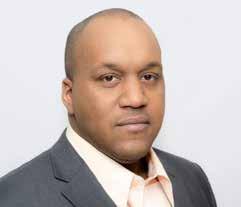
Thirteen years ago, I learned an unforgettable lesson about maintenance and repair. I owned a used white Toyota Camry, and although I was working a modest job as a call center manager, I often skipped oil changes. That $30 never seemed to be available— something always seemed more pressing: groceries, gas, a credit card bill. But when the engine started clicking, I realized my negligence had a price. One month before my wedding, that Camry died on the expressway. The engine was destroyed. The cost to fix it? $4,000.
What I learned that day was simple: repair is always more expensive than maintenance. That same principle applies to
David Seaton CNW Columnist
THE BOOK OF DAVID
Repair Always Costs More Than Maintenance
the condition of the Black community across urban America. We are living through the consequences of generations of deferred maintenance—neglected education, poor health habits, financial missteps, and broken cultural standards. And now, we’re staring down the cost of those decisions. The question is: Are we finally ready to pay attention before it gets worse?
We must confront the truth: nearly 85% of Black youth in major cities cannot read or perform math at grade level. As adults, many struggle to earn livable wages—not because the world is unfair (though it often is), but because we failed to build the basic academic foundation to compete. Likewise, nearly 60% of Black women are overweight
or obese, yet the same system we ignore until something breaks— our healthcare system—is blamed when the outcomes are poor.
Too many in our community have inherited systems of survival, not success. We’ve had families living under Section 8 for generations, missing the single most impactful tool for building wealth in America: homeownership. You cannot build legacy wealth on borrowed time and rented space.
Now let’s talk about relationships. Black people in America marry less than any other group and divorce more than anyone else. Why? Because many couples avoid the maintenance of the relationship—marital counseling, conflict resolution, communication training—usually citing time or cost. But divorce is far
more expensive. It brings alimony, child support, divided assets, fractured households, and generational emotional trauma. Many of those marriages could be salvaged—not all, but many—if we approached our unions with the same maintenance mindset we apply to our cars, homes, or jobs. This is not about shaming. This is about urgency.
We must shift our mindset from reacting to problems to preventing them. That shift requires discipline, sacrifice, and planning. Maintenance is waking up early to work out instead of sleeping in. It’s putting the phone down and helping your child read instead of scrolling on social media. It’s saying no to fast food so you can say yes to your long-term health. It’s attending that school board meeting. It’s
opening that investment account. It’s teaching young men to respect themselves before they expect the world to respect them.
The current repair strategy—waiting for government aid, demanding equity without preparation, blaming external forces for internal neglect—has failed. And it’s costing us more than we can afford.
If we don’t get on a maintenance plan today, we will continue to pay with broken families, shortened lives, lost potential, and unrealized dreams. The time for accountability is now. Not tomorrow. Not next year. Not after the next tragedy goes viral. We know the cost of neglect. Let us now experience the rewards of diligence.
Let’s start maintaining. Our future depends on it.

UPS Offers Historic Buyouts to Drivers— Including in Chicago—as Part of Sweeping Network Restructure
UPS has launched its first-ever voluntary buyout for fulltime delivery drivers across the United States—including those in the Chicago area. According to FOX 32 Chicago, the buyout offer applies to metro-area drivers on the same terms: $1,800 per year of service with a $10,000 minimum, no cap. Drivers must apply by July 31, with separations expected to begin as early as this fall and potentially extend into 2026, depending on seniority and operational factors.
The offer is part of what UPS has described as the “largest network reconfiguration in its history,” projected to eliminate up to 20,000 jobs and shutter 73 facilities nationwide. As reported by Reuters, the restructuring
is in response to falling parcel volume, particularly from Amazon, and increased pressure to reduce fixed labor costs.
The announcement arrives less than two years after UPS and the Teamsters union signed a five-year national contract that was widely seen as a landmark for organized labor.
According to The Associated Press, the deal included $2.75 per hour raises in 2023 and a total of $7.50 in hourly wage increases by 2028. It also mandated air-conditioning in new delivery vehicles, restricted forced overtime on scheduled off-days, raised part-time starting wages to $21/hour, and committed the company to create 30,000 new full-time jobs over the life

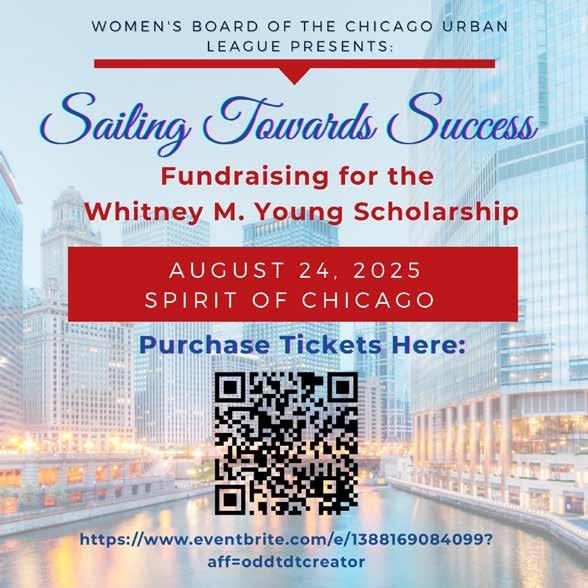
of the contract.
As The Wall Street Journal reported, full-time delivery drivers now receive compensation packages averaging $170,000 annually, including healthcare and pension benefits.
However, the buyout plan has sparked immediate backlash from Teamsters leadership.
Union President Sean O’Brien called the proposal “illegal and insulting,” alleging it violates contractual guarantees around job creation and undermines long-term pension and healthcare obligations. According to a statement from Teamsters. org, the union is exploring legal action and has instructed members to decline the offer.
Among Chicago-area drivers and others nationwide, reactions have been mixed. On Reddit’s r/UPSers forum, user 75703 wrote, “If you’re within three years of retiring anyway, this is free money. Stack the $45k on top of your pension and go enjoy life.” Others pushed back on that logic.
User KingBrownBear commented, “They’re trying to weed out high earners so they
can fill routes with lower-paid 22.4s.” Another user, GreySkiesOnly, noted, “They’re sugarcoating cost-cutting as ‘opportunity’ — but we just signed a contract that guaranteed job growth.”
The sentiment carries over to YouTube. On Ken The UPS Driver’s channel, one viewer responded bluntly: “This is a slap in the face after what we fought for.”
The economic context is stark. The Wall Street Journal noted that Amazon plans to reduce its volume through UPS by 50% by 2026, part of a broader shift to rely on its own delivery network. Meanwhile, UPS shares have fallen more than 45% since mid-2023, reflecting investor concern about high labor costs and declining volume. In response, CEO Carol Tomé has emphasized the need for a “lean and agile” operation. The company cut 12,000 management positions and closed over 200 facilities last year alone, according to reporting by AJC. UPS maintains that the buyout offer is strictly voluntary and does not affect existing retirement benefits. But several drivers told The Sun that they feel pressure to accept the offer or risk being pushed out in less favorable terms later.
Drivers have until July 31 to apply. UPS says selection will be based on seniority, with approved departures staggered based on operational needs and facility restructuring timelines.
According to Reuters, the company now faces a complex balancing act—honoring the terms of a progressive labor contract while adapting to a delivery market under intense financial and competitive pressure. Whether the buyouts ease that strain or trigger further labor conflict remains to be seen.
Former ComEd Lobbyist Falls From Grace John Hooker gets 18-month prison sentence
John Hooker’s head was not held high, reminiscent of his glory days as he filled space in the court room. Hooker and three others were convicted by a jury in May 2023 of a conspiracy to illegally sway Madigan. They helped arrange for five of his allies to be paid $1.3 million by ComEd so that Madigan would look more favorably at the utility’s legislation.
Former ComEd lobbyist John Hooker was sentenced to 18 months in prison for his part in a scheme to illegally influence former Illinois House Speaker Michael Madigan.
U.S. District Judge Manish Shah handed down the sentence in a Chicago courtroom on Monday, saying Hooker knowingly falsified ComEd’s books and records to hide the bribery scheme. And Shah took particular issue with his “clumsy” lies to explain away the corruption.
“[Hooker’s] testimony that he understood the subcontractors would be doing work was intentionally and materially false,” Shah said. “These were no-show jobs by design, and that’s what made the books and records false.”
Hooker addressed the judge during Monday’s sentencing hearing, saying he was “really sorry” to hear the way he sounded on FBI wiretaps.
“I went to trial and I was convicted. … I’m 76 years old, and I cannot really believe that I’m standing here today asking your honor for mercy,” Hooker said.
Hooker’s attorney Jacqueline Jacobson painted her client as a man who had pulled himself out of poverty and sought to pull others up with him.
“He’s still kind, he’s still generous, he’s still helpful, and he’s still there,” Jacobson said.
Assistant U.S. Attorney Julia Schwartz meanwhile argued that Hooker “happily joned” Madigan’s effort to use ComEd “as his personal piggybank.” She said Hooker “deceived internal auditors, deceived ratepayers, shareholders and — importantly —
abused the highest levels of state government in order to gain an unlawful advantage for ComEd.”
Hooker is the first of the ComEd defendants to be sentenced. That means Monday’s hearing could be a preview of what’s in store for the other three. Due to be sentenced in the coming weeks are Madigan confidant Michael McClain, exComEd CEO Anne Pramaggiore and onetime City Club President Jay Doherty.
Prosecutors are seeking sentences of nearly six years in prison for McClain and Pramaggiore . They’ve yet to make a recommendation for Doherty. But for Hooker, they sought around 4 ½ years .
Hooker’s lawyers asked for probation.
“This case involves job recommendations in the private sector, not government funds or kickbacks,” Hooker’s lawyers wrote in a recent court filing. “John is not a public official. He did not seek to personally enrich himself. He obtained no benefit, and he did not intend to harm anyone.”
The four were convicted by a jury in May 2023 of a conspiracy to illegally sway Madigan. They helped arrange for five Madigan allies to be paid $1.3 million by ComEd so that Madigan would look more favorably at the utility’s legislation.
The money was paid through intermediaries, including Doherty’s consulting firm. The recipients were former Alds. Frank Olivo and Michael R. Zalewski, former Cook County Recorder of Deeds Edward Moody, former state Rep. Edward “Eddie” Acevedo and longtime Madigan campaign worker Raymond Nice.
Madigan was convicted in part for his role in the same conspiracy earlier this year, and he’s already been sentenced to 7 ½ years in prison . However, the sentencing of the four ComEd defendants was long delayed by machinations at the U.S. Supreme Court.
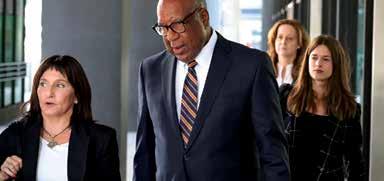
The high court’s ruling in a separate corruption case eventually led to the dismissal of a series of bribery counts in the ComEd case. That left the four defendants each convicted of conspiracy and four counts of falsifying books and records.
Hooker’s most notable role in the ComEd conspiracy may be the February 2019 conversation he had with McClain, which was secretly recorded by the FBI. In it, the two men seem to discuss having hatched the idea to secretly pay Madigan’s allies. “We had to hire these guys because Mike Madigan came to
us,” McClain said in the call.
“That’s — it’s that simple.”
“That’s how simple it is,” Hooker replied.
Hooker added that “this avenue is one of the best avenues” and said “it’s clean for all of us.”
“We don’t have to worry about whether or not — I’m just making this up — whether or not Mike Zalewski Sr. is doing any work or not,” McClain said.
“That’s up to Jay Doherty to prove that.”
McClain added, “that’s why we set it up like this, John.” And later, he said, “you and I came up with it.”
“I know,” Hooker said. Hooker testified in his own defense at trial, including about that call. He characterized it for the jury as “me and McClain just joshing around.” But he added, “anybody we hired had to have value.”
Prosecutors say that was one of multiple lies Hooker told at trial. They said he also lied when he denied any involvement in the scheme, and when he said he arranged for Madigan’s allies to be paid through Doherty’s consulting firm so he could avoid additional responsibilities.
Former Commonwealth Edison CEO Anne Pramaggiore has been sentenced to 24 months in prison in addition to a $750,000 fine — the second of the “ComEd Four” to face sentencing after their 2023 convictions on bribing ex-Illinois House Speaker Michael Madigan via jobs and contracts for his political allies.

Candi McCrary Staff Writer
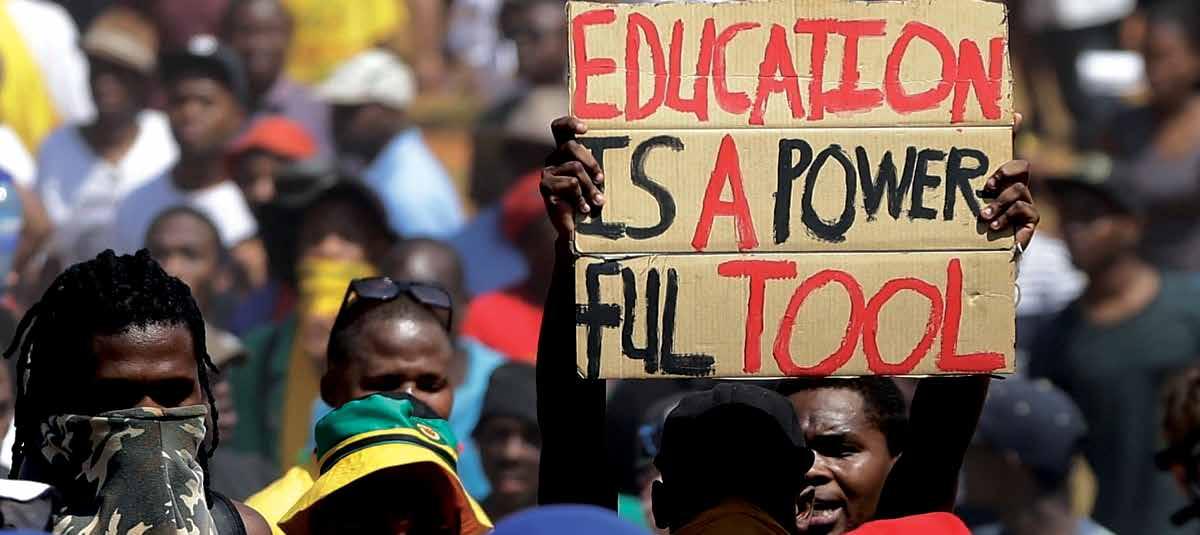
Left to Learn Alone
The Costs of National and Local Budget Cuts on Chicago’s Youth
On a frigid February morning in West Town, Room 302 was cold enough to see breath. The radiator hadn’t worked for weeks, and neither had the chemistry teacher. No substitutes came. The silence was broken by fifteen-year-old Carolina Carchi, standing quietly and moving to the front of the classroom. She opened a worn binder filled with worksheets she’d printed herself, placed sharpened pencils on desks, and began teaching chemistry—a subject she was still learning herself.
The windows were fogged at the corners. A classmate coughed. The only sounds were the hum of fluorescent lights and the rhythmic tap of her pen against the whiteboard. Carolina’s story is not unique. It is one of many.
Across Chicago, students are stepping into adult roles not because they want to, but because they have no choice. In Englewood, a senior juggles her college applications while filling in for her English teacher—who left three months ago and hasn’t been replaced. In Back of the Yards, an eighth-grader leads her classmates through math drills while their teacher is out on unpaid leave. In Austin, a group of freshmen alternate roles in their science lab, copying notes from a textbook while the sub assigned to watch them scrolls through her phone.
These aren’t acts of rebellion or ambition—they are symptoms of collapse.
Across the city, hundreds of classrooms sit silent, supervised but unled. The adults are missing. And the burden to hold it all together has quietly, devastatingly, shifted onto the children.
Austerity’s Silent Echo
Chicago Public Schools (CPS) faces a $734 million deficit this fiscal year. The shortfall has triggered devastating layoffs: 1,450 educators, including over 400 classroom teachers, nearly 700 special education aides, and dozens of counselors and librarians. These figures, obtained through a March 2025 CPS workforce reduction report, reveal a loss that touches 57% of district-run schools—particularly those in Black and Brown communities already burdened by economic neglect and underinvestment.
According to data reviewed by Chalkbeat Chicago and internal CPS vacancy logs, more than 1,800 classes went without a full-time instructor for ten or more consecutive days during the 2024–2025 school year. In most cases, students were either handed online modules with no support or left with busywork. “You just show up, sit down, and wait for the bell,” one sophomore at George Washington High told Chicago News Weekly.
In a districtwide climate survey collected by the Consortium on School
Research, 32% of high school students at impacted campuses reported leading class activities, helping peers complete assignments, or managing classroom materials in at least one subject area during the school year. Younger students recalled working silently through reused packets or being told to write journal entries without instruction.
And Chicago is not alone. Districts in Los Angeles, Baltimore, Oakland, and Jackson, Mississippi report similar patterns: missing teachers, frozen hiring, and a widening gap between need and access. In LA, over 1,000 classrooms began the 2024 school year without permanent teachers. In the Mississippi Delta, some schools share a single counselor across entire districts. The stories shift, but the trajectory is consistent: underfunded, overstretched, and increasingly dependent on student-led survival.
When the Safety Net Unravels
This didn’t happen overnight. The erosion of public education funding has been decades in the making—shaped by federal policy shifts, charter school lobbying, and local tax structures that disadvantage poor neighborhoods. In Illinois, a history of regressive school funding has left urban districts dependent on state infusions that fluctuate
year to year. Meanwhile, political leaders tout graduation rates while ignoring the hollowing of what those diplomas represent. “It’s the appearance of progress,” said one retired CPS principal who requested anonymity. “The lights are on, but the system is running on fumes.” Budget hearings routinely exclude student voices. Promises of equity audits rarely yield material change. What students and teachers see daily—peeling paint, outdated books, and security officers replacing librarians—are the symptoms of decisions made far above their heads.
The federal safety net offered some reprieve during the pandemic. ESSER (Elementary and Secondary School Emergency Relief) funds injected $190 billion into school systems nationwide. Chicago received nearly $2.8 billion between 2020 and 2023. But by late 2024, the funds dried up. No replacement came. In neighborhoods like Roseland or Garfield Park, schools now share a single social worker. Counselors juggle 400 or more students each. Librarians are assigned to three buildings—or none at all. Nurses split their week across four campuses. Children are left navigating loss, stress, and developmental milestones with shrinking adult support.
“As a teacher, I used to plan lessons,” said one South Side educator. “Now I plan interventions.”

When schools cut staff, the collapse is rarely immediate. It creeps in. Classroom energy dulls. Bulletin boards go bare. Bathrooms close for days. Reading corners gather dust. Students begin to disengage. Teachers stretch thinner. Families leave the system altogether—not for private schools, but because they’ve lost faith anyone is steering the ship. Without counselors, kids shoulder grief alone. Without librarians, literacy gaps widen. Without substitute coverage, lesson plans rot on unmonitored drives. Without mentors, teens seek answers from social media and each other. And now, without public media—after the 2025 Rescissions Act gutted $1.1 billion from the Corporation for Public Broadcasting—the watchdog role of local news is vanishing, too.
Stations like WBEZ, which exposed the pattern of missing teachers last fall, have already scaled back education reporting. In shrinking the platforms that cover civic crises, lawmakers ensure fewer people notice as classrooms crumble in silence.
Carolina’s Classroom in Context
Carolina’s quiet courage helped her peers hold on—but she was never meant to be an anchor. No fifteen-year-old should be the most stable adult in the room.
Her story, reported by Block Club Chicago in fall 2024, drew national attention. She went on to graduate with honors and earned a full scholarship to Northwestern. But her trajectory, while remarkable, is not scalable. Most students don’t get profiled. Most don’t have college counselors helping them navigate the system. Most are struggling quietly,
in rooms without teachers or structure.
One sophomore at a Far South Side school said: “I don’t even tell my mom anymore. She already works two jobs. What can she do?”
Another added: “It’s like no one knows this is happening. Or worse—they do, and they don’t care.”
Educator Perspective: Dignity on the Line
For many teachers, the crisis isn’t just logistical—it’s existential. One veteran science teacher in Bronzeville shared, “I didn’t enter this job expecting luxury, but I did expect dignity. Lately, it feels like we’re expected to perform miracles without tools.” Another educator in Belmont Cragin described the guilt that comes with triaging needs: “You walk into a classroom and realize three kids need academic help, one hasn’t eaten, and another is grieving a sibling. Which fire do you put out first?”
Several described questioning their futures in the profession—not due to lack of love for their students, but because the emotional cost has become unsustainable. “It’s not burnout,” one said. “It’s betrayal. We’re being asked to hold up an entire institution while it’s being dismantled from the top down.”
Voices from the Classroom Parents, too, are speaking out. At a town hall in Little Village, a mother of three held up a stack of take-home packets. “This is what they call education?” she asked. “This is babysitting.”
Teachers are organizing walk-ins, sickouts, and anonymous social media campaigns to document real conditions inside schools. Burnout is high. New
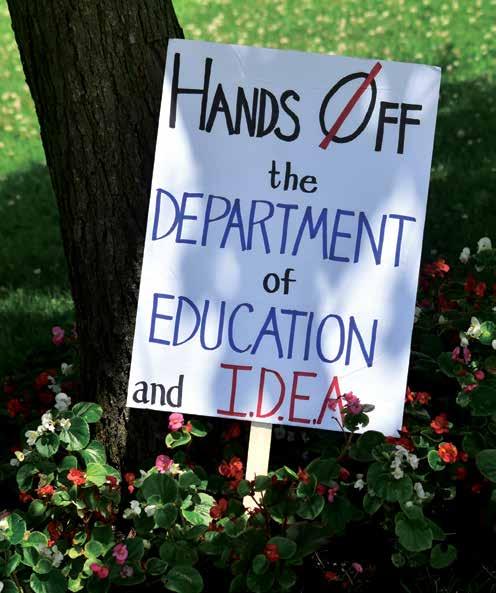
teachers leave within the first two years. Veteran educators say they’ve never seen morale this low.
“We’re duct-taping a system together,” said one middle school principal. “And every week, we lose another piece.”
Students are responding in kind. At several schools, juniors and seniors have coordinated silent sit-ins to demand consistent teachers. Some have created peer tutoring networks or formed Instagram accounts to document broken equipment, missing staff, and overdue repairs.
“I love my school,” said a West Side junior. “That’s why I’m mad. We deserve better.”
A Path Toward Repair
If there is hope, it lives in coordinated reinvestment and grassroots advocacy— but let’s be clear: that path is narrow, and the forces working against it are deeply entrenched.
Restoring cuts is not enough. What’s been eroded over decades will take more than slogans and budget promises to rebuild. It will take political courage, sustained public pressure, and the kind of generational commitment this country rarely offers its most vulnerable children.
Chicago can start by reallocating unspent TIF (Tax Increment Financing) surpluses to its most vulnerable schools. The city’s own audits reveal millions in
reserves, earmarked for development, that could instead fund teacher retention bonuses, mental health programs, and classroom materials. These aren’t luxuries—they are survival tools.
At the state level, Springfield lawmakers must revisit funding formulas that continue to shortchange low-income districts. Advocates point to legislation like the Evidence-Based Funding model, which has helped close gaps, but argue the pace of rollout is too slow to match the rate of collapse.
Nationally, the reinstatement of Title I protections, the revival of public broadcasting support, and the expansion of child tax credits and free school meals would go further than rhetoric. These are concrete levers of policy that can help communities stabilize—and thrive.
Meanwhile, community organizing has never been more urgent. From parent-led equity councils to student unions demanding representation in budget decisions, change is already underway. What these movements need is scale, resources, and public support.
We must refuse to treat resilience as a substitute for justice. Our schools and communities do not need more heroes. They need systems that don’t require heroics to function.
The stories in this piece are not isolated. They’re multiplying. The path toward repair, if it exists at all, will only open if we stop expecting our kids to walk it alone.
The Domino Effect
invisibly,
LOVE & RELATIONSHIPS Laura Miller Managing Editor
This Is What Happens When the Kiss Cam Finds Your Secret
By the time you read this, I hope the public roasting of Astronomer CEO Andy Byron and Chief People Officer Kristin Cabot is over — but who am I kidding? It won’t be. There’s something about this story that we just can’t look away from. Unlike the forbidden twosome, we’re all outside, eyes wide open, popcorn in hand.
In case you’ve been blissfully offline (and honestly, I envy you), here’s the recap: A few nights ago at a Coldplay concert in Foxborough, the infamous “Kiss Cam” panned to a couple cozied up in the crowd. At first, it was cute — until he noticed the camera. That’s when Andy Byron ducked and ran, and Kristin Cabot turned away, face full of panic and what can only be described as shame or maybe conciliation?
The Internet did what it does: zoomed in, replayed, decoded. And the verdict? They were both married — to other people — and they were outside with their affair. OUTSIDE. I don’t know how long they’ve been in this situationship, but I do know this: Andy Byron has already resigned, and his wife has quietly removed his name from all her social profiles.
So... where am I going with this?
Expansion of Curiosity: How do relationships like this even happen?
We love to point our fingers and call it scandal. But the truth? These relationships don’t start in bed — they start in meetings, messages, and micro-moments.
Work proximity breeds intimacy. Two people who solve hard problems together. Sharing wins. Sharing losses. Staying late. Traveling for conferences. One vulnerable comment too far, and now there’s a connection that’s both electric and dangerous.
This doesn’t excuse anything. It just explains what many won’t admit: adulterers don’t always look like villains. Sometimes, they look like two people who slowly stopped holding the right boundaries.
In the case of Andy and Kristin, maybe it was escapism. Maybe it was love. Maybe it was a mistake that got spotlighted before either of them could figure it out.

Why this is so messy
This isn’t just a scandal — it’s a case study in layered betrayal.
Emotional Cheating
You don’t run like that unless there’s more than a work friendship. The reaction? Instant guilt. Deep history.
Romantic/Marital Cheating
Both had spouses. This wasn’t just an “oops” — it was a crack in multiple marriages, now made public.
Professional Cheating
CEO. CHRO. This is a textbook conflict of interest, with real consequences for employees and the company’s credibility. To be honest, when I found out that the woman was the head of HR I literally screamed “NOOOOO” in reflex.
Public Image Cheating
They were supposed to be adults in the room. Now they’re trending for something they couldn’t manage behind closed doors.
And yet — we’re glued to it.
The same way we were glued to Olivia and Fitz on Scandal — even though Jake was single and would literally kill for her,
y’all still screamed “Choose Vermont!” over “Stand in the sun.”
The same way we slow dance in the darkness to “As We Lay” and “Saving All My Love for You.”
Because there’s something irresistibly tragic about love that shouldn’t happen — but it does. Love that defies logic, respectability, and timing.
The Psychology of Forbidden Connection
This isn’t just moral voyeurism — it’s projection. We’re watching them get caught, and quietly asking ourselves what it would feel like if someone saw us on the Kiss Cam, with someone we shouldn’t be with, but can’t seem to stay away from.
“Infidelity is less about sex and more about desire — the desire to feel alive, desired, significant,” says psychotherapist Esther Perel. In her TED Talk Rethinking Infidelity, she argues that affairs often have more to do with the self than the partner — a search for identity, not just intimacy.
“Romantic love is an addiction,” says biological anthropologist Dr. Helen Fisher. “It’s a positive addiction when it’s going well, and a terrible one when
it’s not.”
And workplace affairs? They check all the psychological boxes: Proximity
Mutual admiration
Shared goals
Emotional intimacy masked as productivity
Throw in a little dopamine, throw in a high-stakes secret, and now you’re dealing with limbic system warfare. It’s not just wrong — it’s chemically intoxicating.
The Public Spectacle, the Private Fallout
This is the part we don’t get to see: the spouses blindsided, the kids asking questions, the boardroom fallout, the therapy sessions (or lack thereof), the quiet “how did we get here” moments.
And maybe that’s why we stay tuned. Because it’s not just a scandal. It’s a mirror. To temptation. To secrecy. To the chaos that unfolds when desire becomes public record.
So maybe this wasn’t just a Coldplay concert with a messy interlude.
Maybe it was a reminder: that the line between order and chaos, loyalty and longing, private and public — is one camera pan away. Stay alert friends.
Third Annual Maconomics Wealth Summit Brings Financial Empowerment Home to Chicago
The 2025 Maconomics Wealth Summit took place July 18–20 in Chicago—anchored at Whitney Young Magnet High School and featuring high-impact events like a Friday VIP dinner, Saturday financial panels and keynotes led by Ross Mac and experts such as Tiffany Aliche and Antoine Walker, plus a festive all-white yacht party on Lake Michigan, culminating in a Sunday charity basketball game and backpack giveaway benefiting 500 local youth. The three-day gathering blended actionable wealth-building workshops (on investing, real estate, insurance, estate planning, and more) with cultural and community engagement, technical toolkits, digital resources, and meaningful philanthropic outreach—reinforcing Ross Mac’s mission to democratize financial education while fostering joy, connection, and generational impact.
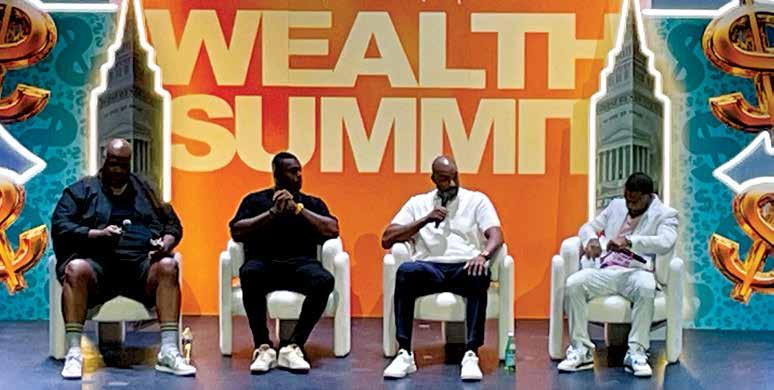

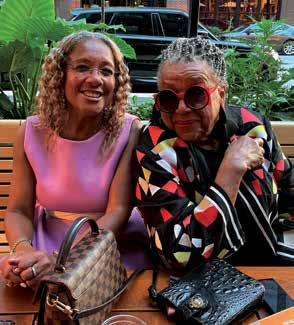

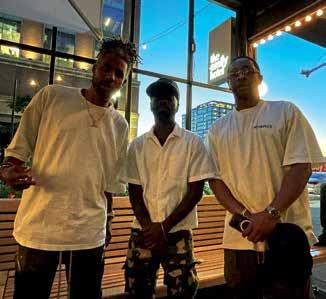
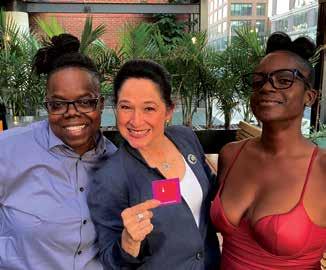
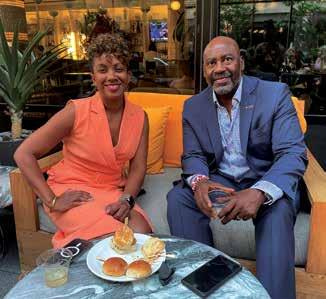
Photos by: South Side Radio Live - Summer Coleman & Pam Greer
Malcolm-Jamal Warner, Gone Too Soon
Malcolm-Jamal Warner was born on August 18, 1970, in Jersey City, New Jersey, to parents Robert Warner Jr. and Pamela Warner. The talented actor, musician, and poet rose to prominence for his role as Theodore Huxtable on the NBC sitcom The Cosby Show, which earned him an Emmy nomination for Outstanding Supporting Actor in a Comedy Series at the 38th Primetime Emmy Awards. After the Cosby series, he went on to his roles as Malcolm McGee on the sitcom Malcolm & Eddie, Dr. Alex Reed in the sitcom Reed Between the Lines, Julius Rowe in Suits, and Dr. AJ Austin in the medical drama The Resident.
In 2015, the talented Warner received a Grammy Award for Best Traditional R&B Performance for the song “Jesus Children,” alongside Robert Glasper Experiment and Lalah Hathaway.
I met the young Malcolm when he was visiting his father in Chicago. As the editor of N’DIGO Magapaper, I booked him for a cover. During the photo shoot, Malcolm was acting like a typical child star when I had to ask him to behave in a manner that would make his parents proud. After settling down, he shared with me that he was named after Malcolm X and jazz pianist Ahmad Jamal and spoke of having big shoes to fill. After his parents separated, Malcolm grew up in Los Angeles until the age of nine, when he demonstrated an interest in show business that led to his enrollment in acting school in pursuit of an acting career. His meteoric rise as a child performer led him to graduate from The Professional Children’s (high) School in New York City.
After appearances and roles on a spectrum of television shows and films, he landed his most successful role as Theo Huxtable, the only son of Heathcliff Huxtable, played by Bill Cosby, who was the brainchild of the NBC sitcom The Cosby Show. The hit comedy ran from 1984 to 1992. Malcolm auditioned for the iconic role on the final day of the nationwide search, in which he landed and gained prominence as a talented actor. Malcolm’s plethora of performances— from his guest appearance in an episode of The Fresh Prince of Bel-Air, playing the role of Hilary Banks’ boyfriend, to hosting the literacy-promoting children’s show CBS Storybreak in 1993 and 1994—represent his talent and consciousness as a Black man in our modern-day society. Roles like a homeless man on Touched by an Angel, U.S. Marshal Terry Nessip in the film Drop Zone
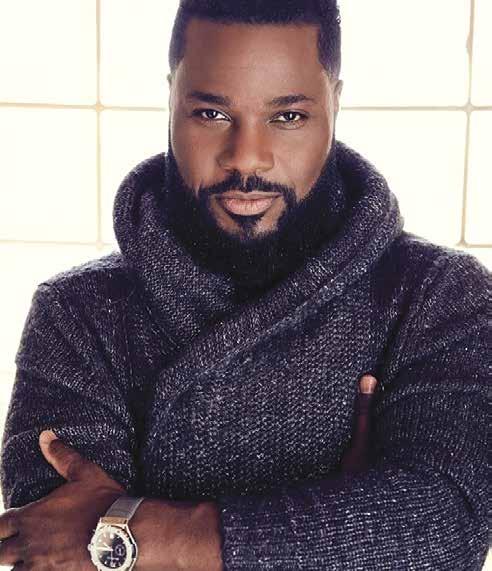
with Wesley Snipes, and Leroy Cappy in the HBO film The Tuskegee Airmen all speak to his range of artistic mastery. The roles are too many to name but include Malcolm & Eddie; co-starring as Kurdy Malloy in Jeremiah; voicing The Producer character on The Magic School Bus; appearing in the CBS sitcom Listen Up with Jason Alexander; playing Cordell in the rom-com film Fool’s Gold; guest-starring in an episode of the TNT series; and four episodes of the NBC series Community as Andre, the ex-husband of Shirley Bennett (Yvette Nicole Brown). His character subtly referenced his Cosby Show past by wearing a “Cosby sweater” that he stated was from his dad.
Malcolm’s work remained steady as he co-starred in BET’s 2011 scripted comedic television series Reed Between the Lines in the role of English professor Alex Reed, married to Carla Reed, a psychologist played by Tracee Ellis Ross. The role garnered a nomination for Outstanding Actor in a Comedy Series at the NAACP Image Awards.
In season three of TNT’s Major Crimes, Malcolm portrayed Lt. Chuck Cooper. He played Al Cowlings in the 2016 crime series American Crime Story production The People v. O.J. Simpson. On the sixth season of USA’s Suits, he
good on him. In 2015, he received a Grammy Award for Best Traditional R&B Performance for his contribution to a cover of Stevie Wonder’s “Jesus Children of America.” Warner performed a poem on the track, dedicated to the victims of the Sandy Hook Elementary School shooting, along with musicians Robert Glasper Experiment and Lalah Hathaway.
Warner played bass guitar, performing in a band where he recited his poetry over the music. Warner performed at the National Black Theatre Festival from 2003 onwards, in addition to hosting its Poetry Jam. Malcolm’s 2022 spoken word poetry album Hiding in Plain View was nominated for a Grammy Award for Best Spoken Word Poetry Album in the 65th Annual Grammy Awards—the first year the category was included in the awards. That year, Chicago homeboy J. Ivy walked away with the award.
In June 2024, Malcolm and co-hosts Weusi Baraka and Candace Kelley created the Not All Hood (NAH) podcast to discuss the lives and experiences of Black Americans.
portrayed prison counselor Julius Rowe. He also played the role of parole officer James Bagwell on Amazon Prime’s show Sneaky Pete, and he appeared as Dr. AJ “The Raptor” Austin on FOX’s The Resident.
Malcolm’s talent wasn’t limited to his role in front of the camera. In fact, during his tenure on The Cosby Show, Warner turned his hand to directing, making music videos including New Edition’s “N.E. Heart Break,” rapper Special Ed’s “I’m the Magnificent,” and British R&B group Five Star’s “I Love You for Sentimental Reasons.” He directed episodes of sitcoms including The Cosby Show, All That, Kenan & Kel, Malcolm & Eddie, and The Fresh Prince of Bel-Air. Warner also directed the teen-oriented public health video Time Out: The Truth About HIV, AIDS, and You (1992), which featured Arsenio Hall and Earvin “Magic” Johnson discussing the realities of HIV and AIDS and the best ways to prevent its spread.
The multi-talented Malcolm released his debut jazz-funk EP, The Miles Long Mixtape, followed up with his second CD entitled Love & Other Social Issues. It was during that time that I’d run into him often at poetry slams and comedy venues in L.A. He was living up to those big shoes he had to fill, and they looked
Over the years, Malcolm has always been low-key where his private life was concerned. Known was his high-profile relationship with actress Michelle Thomas, who played his girlfriend Justine Phillips on The Cosby Show, until her unexpected death in 1998. Years later, he dated actress Karen Malina White for seven and a half years, followed by his relationship with actress Regina King from 2011 to 2013.
Life was finally mellow and full of inner peace, and Malcolm was living his dream. After meeting through a mutual friend, Malcolm married in 2017 at the age of 45 and later welcomed one daughter. He chose to keep his wife’s and daughter’s identities private.
He is quoted as saying, “So I talk about them a lot because I’m very proud of my life and especially that aspect of my life,” he said.
While speaking of his marriage, Warner said he “never second-guessed it.”
“We’ve been together almost 10 years, and we have never had a fight, an argument, a raised voice, or a harsh word said to one another. ... And it’s not like we agree on everything,” he said. “I think because we met later in life, we’ve just always been at a point where we have a way of communicating like adults.”
Unfortunately, Malcolm suffered the tragedy of drowning while swimming on July 20 during a family vacation at Playa Cocles in Limón Province, Costa Rica.
Laura Miller Managing Editor
Last Call for Late Night
When I was a very young girl I remember tiptoeing out of my bed at my grandmother’s to watch Ed McMahon say “HERRREEES Johnny!” I heard it and I’d scurry out of the room and peer at the side of the hallway hoping my grandmother wouldn’t hear me. I believe she did know I was there, because at some point I’d go from standing, to leaning, to sitting quietly as Carson began his opening monologue and proceeded to interview his guests.
Talk shows, for as long as I can remember, have been a part of my life, and what I fear is this form of entertainment may be on its way into obscurity. Recently, CBS announced that The Late Show with Stephen Colbert would be ending at the end of this season and would not be returning. CBS claims it’s a financial decision. But there wasn’t a time too long ago—2018—when The Late Show was number one.
The public line is about money. But some, like Jon Stewart, aren’t so sure. As he put it,
“The fact that CBS didn’t try to save their #1 rated network late night franchise that’s been on the air for over 3 decades is part of what’s making everybody wonder — was this purely financial? Or maybe the path of least resistance for your \$8 billion merger.”
It’s hard not to question the motives when what’s being cut is one of the few spaces in broadcast television where satire and truth-telling still coexist. Stewart went further in his criticism:
“I believe CBS lost the benefit of the doubt two weeks prior, when they sold out their flagship news program to pay an extortion fee to said president. At that time, poor Andy Rooney must have been rolling over in his bed... That’s right. He’s alive. And he’s just turning over in bed. Biding his time.”
Late-night has always been more than entertainment. Opening monologues— especially in recent years—have become the last standing platforms where hosts are allowed, even expected, to call out political absurdity, corporate hypocrisy, and social injustice. In a world where news is filtered and social media is fractured, late night still offered the rare opportunity to hear someone joke about the un-jokeable—and still make a point. By removing The Late Show with Stephen Colbert, there’s one less host with at least a million people watching who’s willing and able to hold power accountable.
And let’s not forget: this platform has
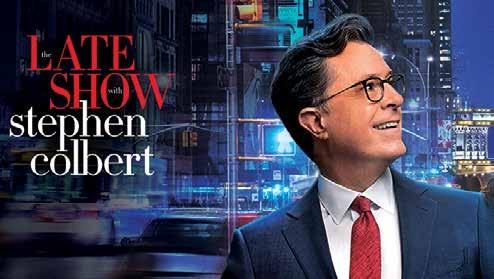
never been static. It’s evolved through generations. From the days of Bob Hope’s radio monologues to Steve Allen’s witty banter and Johnny Carson’s cool confidence, each era had its truth-teller. Even The Arsenio Hall Show—a cultural reset in its own right—wasn’t just about celebrity interviews or flashy late-night antics. Arsenio brought fist-pumping energy and a style that resonated with a new generation. He made sure Black culture, hip hop, and political issues that were often sidelined on other networks had a national platform. He didn’t just entertain—he represented. His presence shifted the late-night landscape and proved that it could be more inclusive, more real, and more reflective of the America that wasn’t always seen on television.
Some late-night efforts didn’t last—The Vibe Show with Chris Spencer whether it’s a show you like or not, but wasn’t given the time or support to compete with the network giants. The Queen Latifah Show offered something different too—a mix of celebrity, culture, and authenticity that didn’t fit the typical late-night mold. And maybe that was the problem. These shows, like many others, came and went before they had the chance to reshape the space in their own voice.
The Amber Ruffin Show was another gem—smart, funny, fearless. Amber brought an unapologetically Black, feminist, and comedic lens to late night with a show that was equal parts sharp monologue, biting satire, and joyful sketch. It wasn’t just good—it was important. But in the ever-shrinking field of late-night TV, even shows that work are vulnerable when networks and streamers don’t see them as mass-market enough. Hers deserved more time. More eyes. More support. Now? Even cable is on unstable footing. The Daily Show drifts without a perma-
nent host. Conan ended his run in 2021. Networks are filling time slots with reruns and game shows. CBS has already announced it won’t be replacing The Late Show with another talk program. Just syndicated filler. Cheaper, sure. But soulless.
Call me partial—but the way we view late night should stand. It was never just
about laughs. It was about gathering. It was about the rhythm of the day ending with someone sitting behind a desk telling us, “This is what happened. And here’s why it matters. And yes, you’re allowed to laugh.”
I get it—live TV isn’t what it used to be. We stream. We scroll. We watch highlights the next morning. But since the age of television, there was always late night. Not perfect, but present. Not just a show, but a reflection. A mirror. A release. A protest wrapped in punchlines. If they ask me—though I doubt they will—I’d say to CBS and every network thinking about chasing ad revenue over legacy: that 10:30pm slot can air whatever you want, but don’t expect it to resonate. Because what we’re losing isn’t just a talk show. We’re losing one of the last places where someone with a voice, a desk, and a camera could still speak truth with a smile—and get millions to listen.
And when that curtain finally drops, we’ll be left in the dark.

The A.I. The answer.is...
No matter your age or level of education, given the moment in time we are facing, it is our responsibility to enlighten ourselves—to be better prepared to meet the reality of the moment. Knowledge is greater than money or gold. It is the real currency. I beg of you: don’t be caught without it. Here are the definitions of key terms you should be aware of and knowledgeable about. Understanding each term independently—knowing their definitions and recognizing how they are interconnected—can serve you well on your journey.
Definitions
Rebellion:
An act of violent or open resistance against an established government, ruler, or authority. It often signifies a more organized and sustained effort to overthrow or significantly challenge power due to perceived oppression, injustice, or inequality.
Protest:
A public expression of objection, disapproval, or dissent against a policy, action, idea, or state of affairs. Protests
can take various forms and often aim to influence public opinion or government policy, typically through peaceful means.
Sit-in:
A form of direct action and protest where individuals occupy an area (like a building, lunch counter, or public space) and refuse to leave until their demands are met or until they disrupt normal operations. Sit-ins are typically non-violent and aim to raise awareness and pressure for change.
Riot:
A public disturbance involving three or more people behaving in a violent and uncontrolled manner. Riots often involve threats or acts of violence, disorder, or terror, frequently resulting in property damage or injury. While they can arise from protests, riots are distinguished by their violent nature.
Ruckus:
A noisy commotion, disturbance, or uproar. This refers to a disorderly or boisterous situation, often less organized or purposeful than a protest or riot but still disruptive to the peace.
March:
A type of protest or demonstration involving a group of people walking together from a starting point to a predetermined destination. Marches often culminate in a rally featuring speeches and signs, with the goal of showing solidarity, raising awareness, and applying pressure for a cause.
Demonstration:
A public gathering or display of people to express their views, advocate for change, or protest specific issues or policies. It is a broad term that encompasses various forms of collective action, including marches, rallies, and sit-ins.
Commonalities and Interconnections
These terms are interconnected—they all relate to collective action and expressions of discontent or advocacy in the public sphere. Here’s how they relate:
Shared Goal of Expression and Change:
At their core, all these actions—from peaceful protest to violent rebellion— stem from a desire to express a viewpoint, highlight a grievance, or bring about social, political, or economic

change. They are ways for individuals or groups to make their voices heard.
Escalation and Spectrum:
These actions exist on a spectrum of intensity and intent:
Protest, March, Demonstration, Sitin: Generally considered non-violent forms of resistance or civil disobedience. They aim to disrupt, raise awareness, and apply pressure without direct harm or destruction. A “march” or “sit-in” is a specific type of “protest” or “demonstration,” and “demonstration” is the broadest of these terms.
Ruckus: More of a general term for a noisy disturbance, which may result from a protest or arise spontaneously. It lacks the focused purpose of other actions.
Riot: A protest that turns violent and destructive becomes a riot. The defining characteristic is widespread, uncontrolled violence and property damage.
Rebellion: The most extreme form of resistance, rebellion involves an organized and sustained effort to overthrow or fundamentally resist an established authority, often through violence. A riot may occur as a spontaneous outburst within a broader rebellion, and a rebellion may incorporate multiple coordinated protests and demonstrations.
Public Display:
Most of these actions involve public gatherings or displays designed to attract attention, build support, and put pressure on power structures or the broader public.
Risk and Consequences:
Participants in all these actions face varying degrees of risk—from social disapproval to legal repercussions. The risks generally increase as actions move from peaceful protest toward riot or rebellion.
In Essence:
A protest or demonstration is a broad act of dissent, often expressed through a march or sit-in. A ruckus may be an unplanned disturbance. If a protest turns violent, it becomes a riot. If resistance becomes sustained, organized, and aimed at overthrowing authority, it becomes a rebellion.
Democratic Senate Primary Heats Up in Illinois as Fundraising Numbers Roll In
The race for the 2026 U.S. Senate Democratic primary in Illinois is already shaping up to be a costly affair, with new fundraising reports revealing significant financial backing for the leading candidates and the launch of the first television advertisement of the election cycle.
U.S. Rep. Raja Krishnamoorthi has emerged as the frontrunner in early fundraising, pulling in nearly $3 million in the first quarter of the campaign. This impressive sum includes transfers from his existing House campaign account, leaving him with a formidable $21 million cash on hand. Krishnamoorthi, known for his prolific fundraising in Congress, attributed his success to a broad base of individual donors. His campaign wasted no time putting these funds to use, launching the election cycle’s inaugural TV ad on Tuesday, a half-million-dollar expenditure for the first week alone, airing across Illinois and on digital platforms.
Meanwhile, Lt. Gov. Juliana Stratton, though having the smallest cash balance among the top three, has quickly gar-
nered support from some of the state’s most influential political figures. Since launching her campaign in late April, Stratton has raised just over $1 million, bringing her cash balance to $666,416. Notably, Governor JB Pritzker, who endorsed Stratton a day after her campaign announcement, contributed the maximum individual amount of $3,500 for the primary and another $3,500 for the general election. Pritzker’s support extends beyond his personal contribution, as his wife, MK, his two adult children, and cousins Adam, John, Gigi, and Jennifer Pritzker, all contributed the maximum $7,000. Jennifer Pritzker, a former supporter of President Donald Trump, has more recently backed Democratic candidates.
Stratton has pledged to forgo corporate political action committee (PAC) donations, a stance that differentiates her from Krishnamoorthi and U.S. Rep. Robin Kelly, both of whom accept such contributions. While she returned a donation from Marquis Energy’s PAC, she has accepted contributions from several
Marquis family members holding top leadership positions at the energy company. Her donor list reads like a “who’s who” of Illinois Democrats, including 12 members of the General Assembly, Lake County Democrats such as State’s Attorney Eric Rinehart and Highland Park Mayor Nancy Rotering, and prominent figures from Chicago’s professional sports teams, including Cubs co-owner Laura Ricketts, White Sox and Bulls owner Jerry Reinsdorf, and Blackhawks CEO Danny Wirtz. Other donors span various sectors of state politics, from Senator Tammy Duckworth and former legislators to high-profile lobbyists and Pritzker’s top political advisor.
U.S. Rep. Robin Kelly, despite having the lowest fundraising total this quarter at $565,775 across her House and new Senate committees, boasts a significant $2 million available in her campaign accounts. Kelly’s donor base includes numerous corporate PACs, local officials within her 2nd Congressional District, and notable Illinois government figures such as former state Senator Jacqueline
Collins and Chicago Fire Department Commissioner Annette Nance-Holt. This primary also marks a third battle between Kelly and allies of Governor Pritzker. Kelly previously served as chair of the Democratic Party of Illinois, winning the position in 2021 against a Pritzker-backed candidate. However, she later ended her bid for re-election as party chair when it became clear she lacked sufficient support to defeat State Rep. Lisa Hernandez, who was also backed by Pritzker. Kelly, of Matteson, maintains that money will not be the deciding factor in the Senate race, emphasizing her extensive experience across all levels of government.
Beyond the three leading Democrats, ten other candidates from both parties have filed federal campaign committees, though they have not yet reported substantial contributions.
With the primary still eight months away on March 17, 2026, the early fundraising figures and the launch of TV advertising signal an intense and well-funded contest ahead for the Democratic nomination for U.S. Senate in Illinois.

Food & Wine
Penne Pasta, Shrimp, and Herbed Cream Sauce
As long as summer is, it’s even more important to discover quick, easy-toprepare, and tasty recipes that satisfy our hunger and keep us healthy.
I recently dined at Tuscany’s and had the best Italian food ever. It’s always been satisfying because the family-owned restaurant gets it right every time. It reminded me of the years I lived in Bologna, Italy. The pasta is homemade and cooked to perfection—trust me, it’s an art. When you miss the mark, the pasta can be too hard because it’s undercooked, or too soft because it’s overcooked. Either way, it affects the taste, because seasoning and texture go hand in hand. It took me a while to understand the significance of these small details. Also, be sure to use the type of pasta recommended for the recipe—this makes a difference to the true pasta connoisseur. Trust me on this, and follow the instructions for the cooking time based on the amount of pasta you’re preparing. There’s nothing like pasta that has absorbed the seasoning and become one with the sauce... oooh, Mamma Mia!
So here you go—follow the instructions and enjoy!
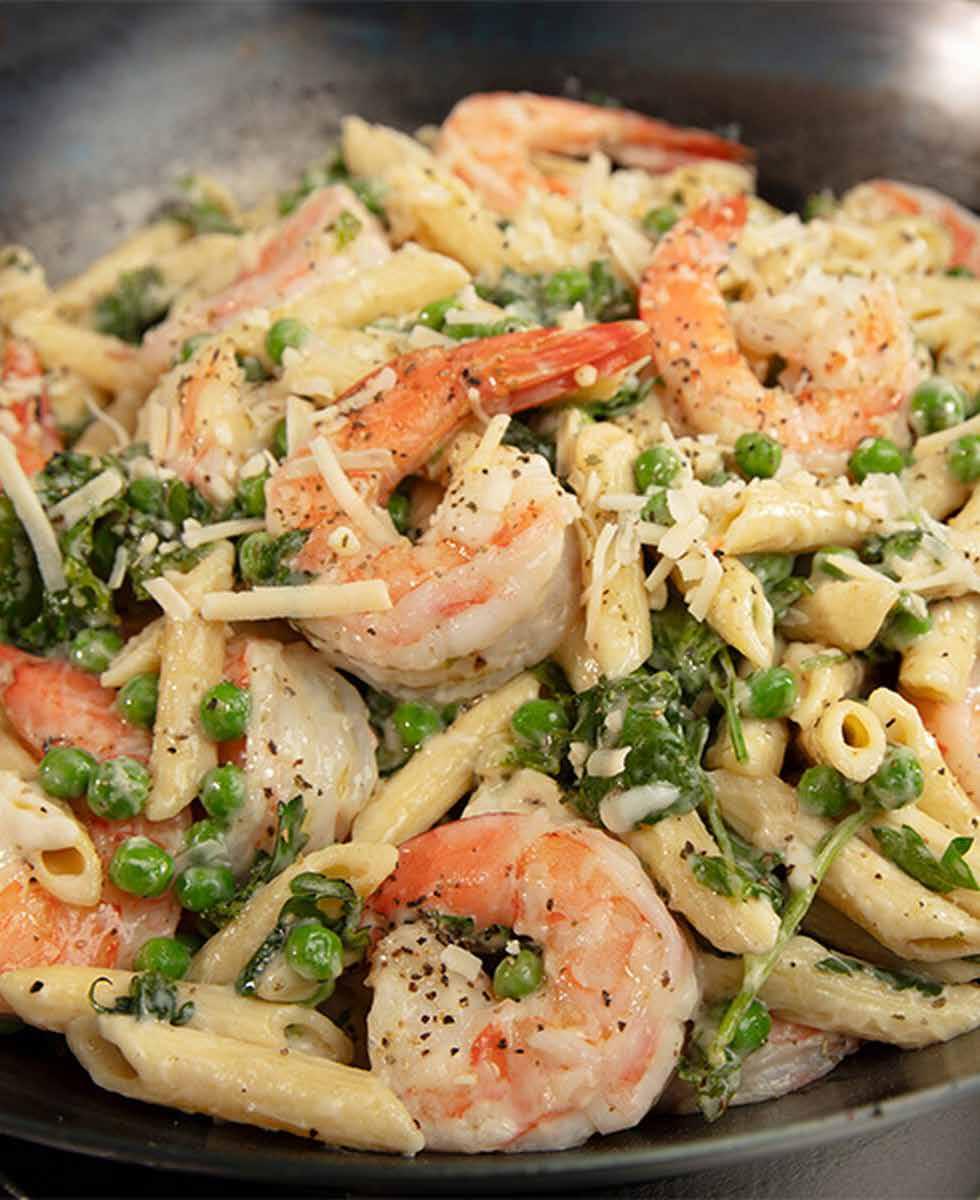
Ingredients:
Total: 30 min
Prep: 10 min
Cook: 20 min
Yield: 4 to 6 servings
Ingredients
1 pound penne pasta
1/4 cup olive oil
1 pound medium shrimp, peeled and deveined
4 cloves garlic, minced
1/2 teaspoon kosher salt, plus extra for seasoning
1/2 teaspoon freshly ground black pepper, plus extra for
seasoning
1 (15-ounce) can whole tomatoes, drained and roughly chopped
1/2 cup chopped fresh basil leaves
1/2 cup chopped fresh flat-leaf parsley
1/4 teaspoon crushed red pepper flakes
1 cup white wine
1/3 cup clam juice
3/4 cup heavy whipping cream
1/2 cup grated Parmesan cheese
Directions
1. Bring a large pot of salted water to a boil over high heat. Add the pasta and cook until tender but still firm to the bite, stirring occasionally, about 8 to 10 minutes. Drain and set aside.
2. In a large skillet, heat the olive oil over medium-high heat. Add the shrimp, garlic, 1/2 teaspoon salt, and 1/2 teaspoon pepper. Cook, stirring frequently, until
the shrimp turn pink and are cooked through, about 3 minutes. Using a slotted spoon, remove the shrimp and set aside.
3. Add the tomatoes, 1/4 cup basil, 1/4 cup parsley, and the red pepper flakes. Cook for 2 minutes, stirring constantly. Add the wine, clam juice, and heavy cream. Bring the mixture to a boil. Reduce the heat to medium-low and simmer for 7 to 8 minutes, until the sauce thickens.
4. Stir in 1/4 cup of the Parmesan cheese, then return the shrimp and pasta to the skillet along with the remaining herbs. Toss until everything is evenly coated. Season to taste with salt and pepper.
5. Transfer the pasta to a large serving bowl. Sprinkle with the remaining Parmesan and serve immediately.


THE STAY READY PLAYBOOK HE
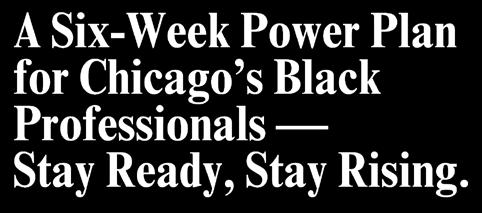
C.L. Blackburn Contributing Writer
FASHION
Why White Is the Coolest Summer Color

Summer is here, bringing the opportunity to embrace a cool, fresh, stylish look that turns heads, sparks envy, and draws the attention of your love interest. So, what’s the best color to incorporate—and saturate—your wardrobe with this season? White.
From blindingly bright whites to soft ivory hues, white is without a doubt the ultimate summer color. It effortlessly exudes sophistication and elegance. Any fashion designer or stylist will tell you: you can’t go wrong with white. And it doesn’t have to be linen—though, as we discussed last week, linen is a star fabric.
But white—whether it’s linen, cotton, denim, crepe, silk, or more—remains the standout. Maybe it’s because white signals cleanliness, purity, or that classic virginal persona. Or maybe it’s because it quietly suggests wealth and refinement. Choosing white for your summer outfits is not only a bold fashion statement—it helps regulate your body temperature and keeps you looking cool, fashion-forward, and irresistible under the scorching sun.
If you’re wondering how to revamp your wardrobe, let’s do it. Wearing white as your signature summer color? That’s a one-way ticket to style heaven.
Why? There are plenty of reasons to embrace white as your summer “love color”—one that complements your love language, whatever that may be. White always looks fresh and clean—easy and breezy. It’s ideal for hot days, and it makes you look effortlessly stylish, put-together, and elegant.
Wearing a white T-shirt with white jeans—or a white denim skirt—means you’re ready for almost any occasion and likely to be the star of the moment. One of white’s biggest strengths is that it complements every color, texture, and level of style. Seriously.
You can run off to the beach in white linen pants, enjoy a fabulous lunch in a white cotton dress, take a bike ride in crisp white shorts, hang out by the pool in sleek white swimwear, or flaunt a white sundress at a barbecue. You can even go for a dramatic floorlength white dress for dinner under the stars—or end your night in a dreamy white nightgown. Either way, white brings an unforgettable sense of summer flair.
In Closing: The Benefits of Wearing White in Hot Weather It’s no secret that white is one of the best colors to wear in the heat. Staying cool is just one of the benefits. Below are sev-
eral more reasons to don your whites when the temperatures rise:
White reflects heat and sunlight, helping to keep your body temperature down.
Wearing white can make you look slimmer and feel more confident in your appearance. White is a timeless summer color that never goes out of style.
White clothing is often more affordable than items in other trendy colors—making it great for budget-conscious shoppers. White outfits are endlessly versatile—you can dress them up or down with accessories and jewelry in any complementary shade.
White Is the Ultimate Summer Color

